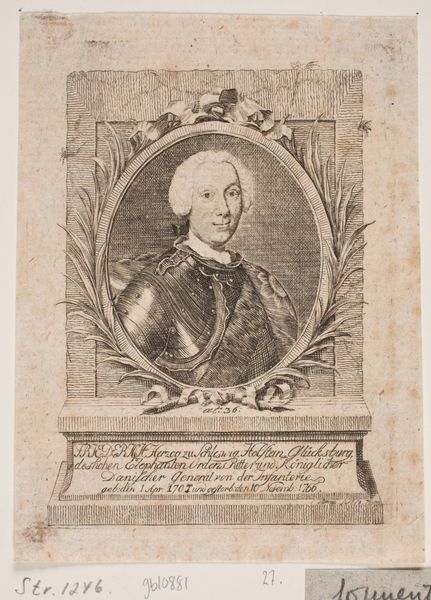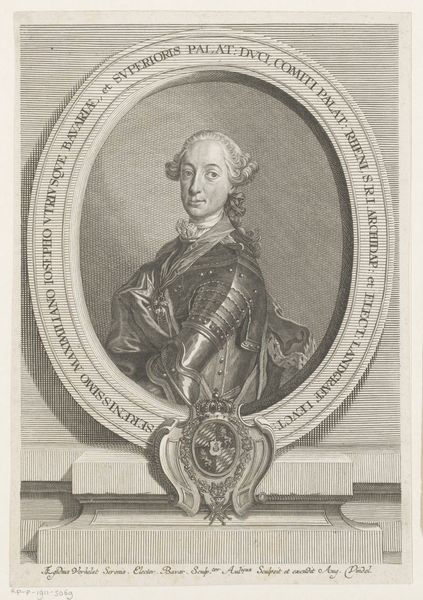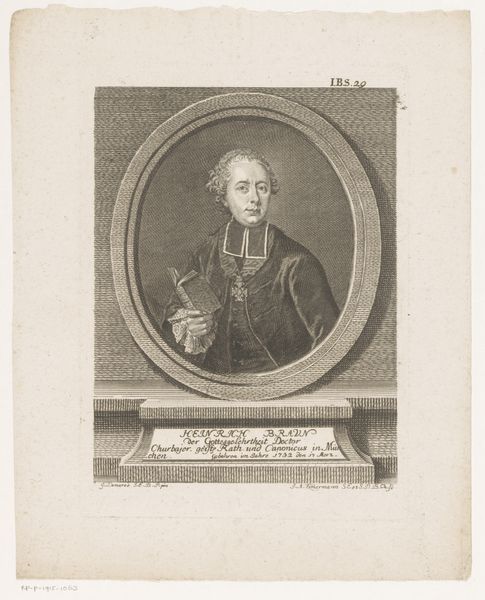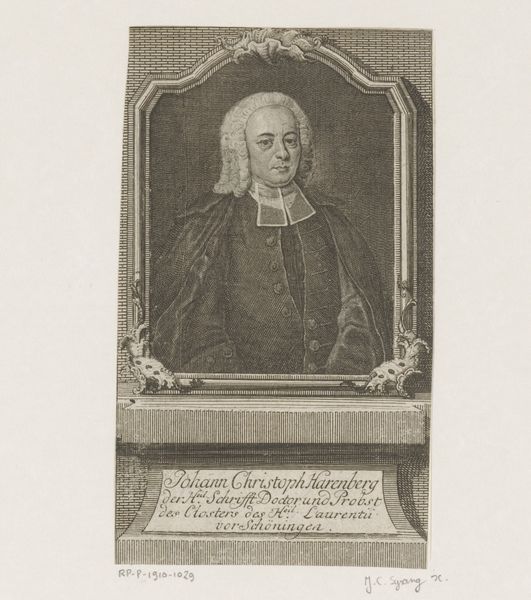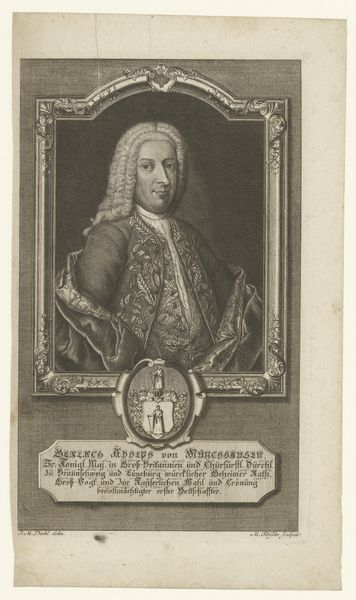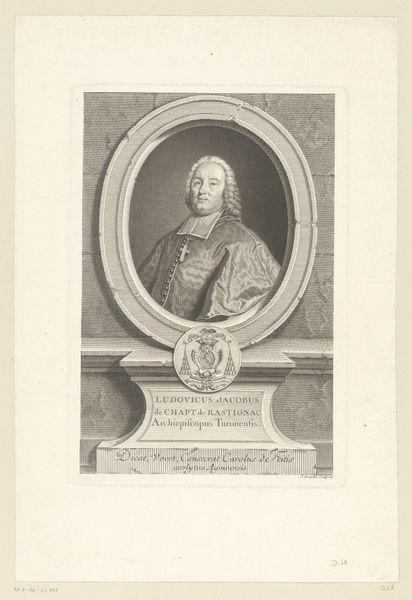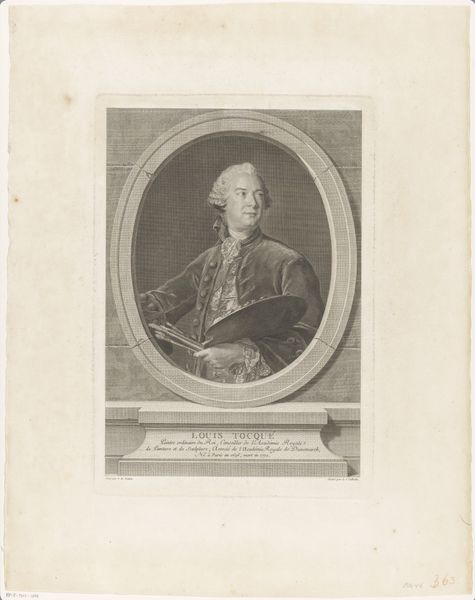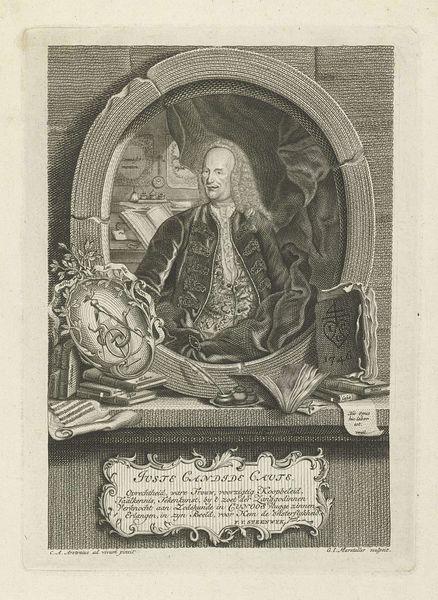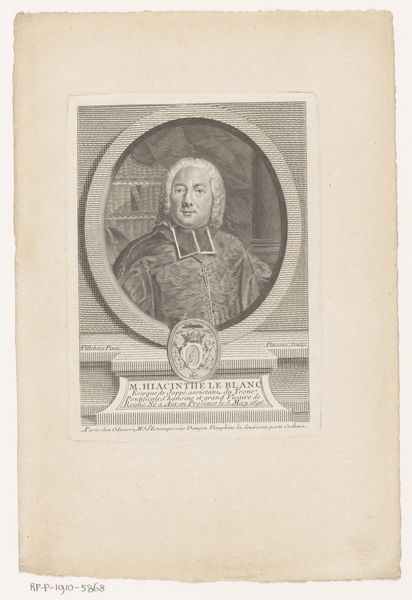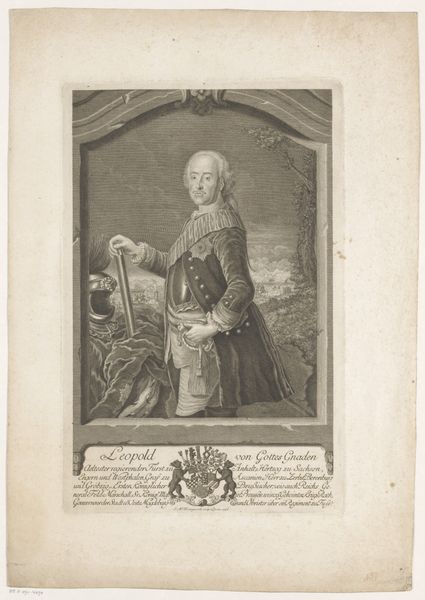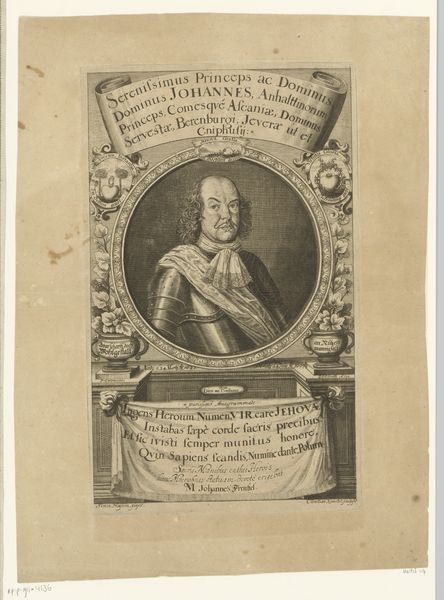
Dimensions: height 303 mm, width 220 mm
Copyright: Rijks Museum: Open Domain
Editor: This is a print, "Portret van Karel II, koning van Spanje" made around 1750-1799 by Francesco Cepparuli. The level of detail is striking! What historical context should we consider when viewing this portrait? Curator: Considering Cepparuli’s portrait through an activist lens demands that we explore Charles II’s legacy. The portrait itself, with its ornate Baroque frame, presents an image of power and divine right. However, his reign was fraught with political instability and marked by his inability to produce an heir, leading to the War of the Spanish Succession. Editor: So, the image presents one idea of Charles, while history tells a more complex story. Curator: Exactly. We must also consider the politics of representation. How does Cepparuli, as the artist, participate in constructing and perpetuating a specific narrative about Charles II? Who was this image for, and what purpose did it serve? Was it meant to bolster the King’s image at a time of weakness? Editor: I hadn't thought about the artist's role as a kind of propagandist. Curator: Furthermore, it is interesting to see how this imagery ties to a very specific form of rulership, but ultimately proved to be somewhat fragile, leading to broader regime shifts. How can art give an apparently durable legacy that belies other material realities? Editor: That makes me question all the portraits I see! It's more than just a likeness; it's a statement. Curator: Absolutely. Art like this provides us a vital window into the performance of power and identity, but only if we unpack the layers of social and political meaning embedded within it. It’s about excavating those often-silenced voices and perspectives to form a more complete understanding of our shared history. Editor: I see the piece so differently now. I appreciate the insights!
Comments
No comments
Be the first to comment and join the conversation on the ultimate creative platform.
